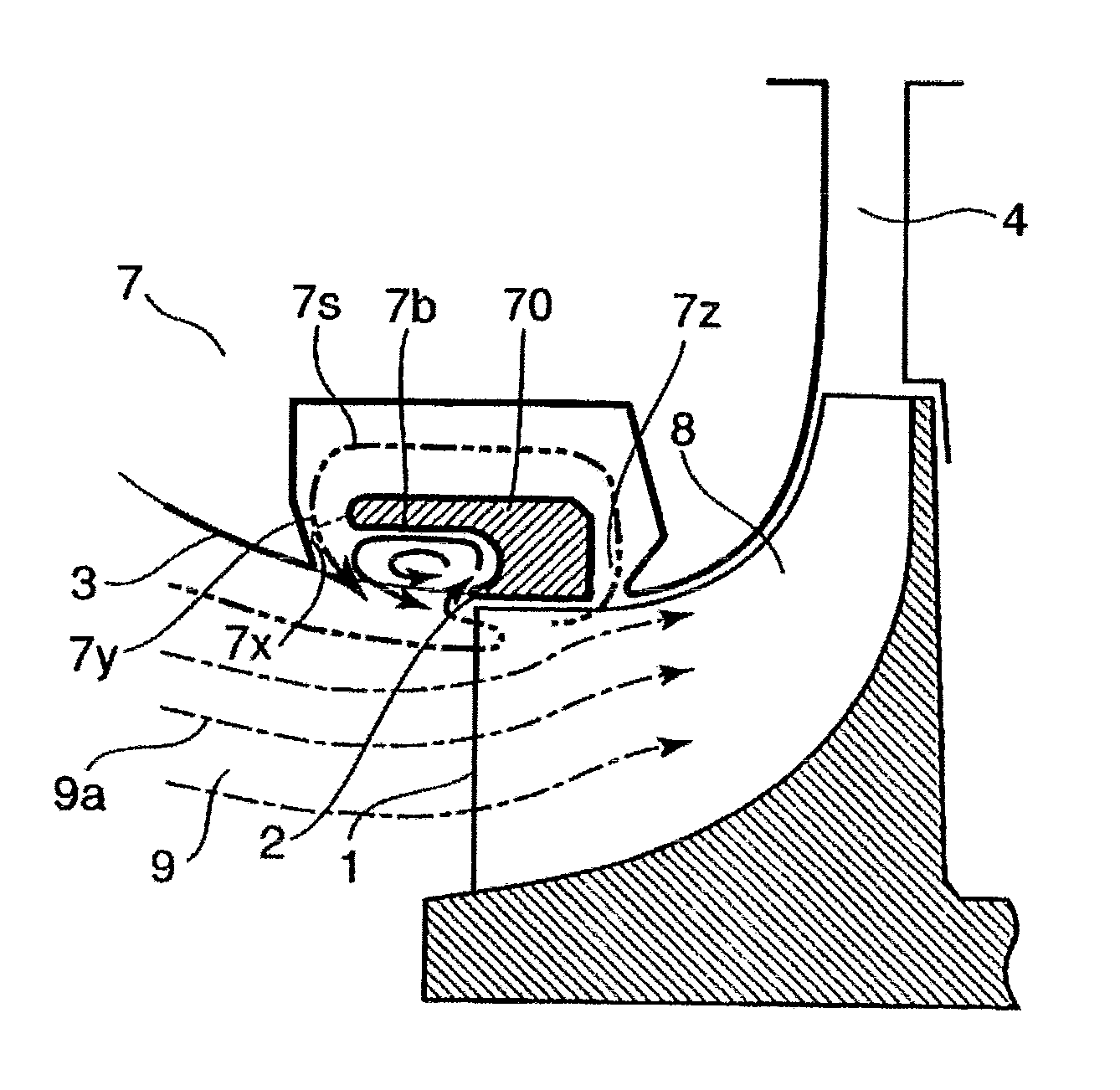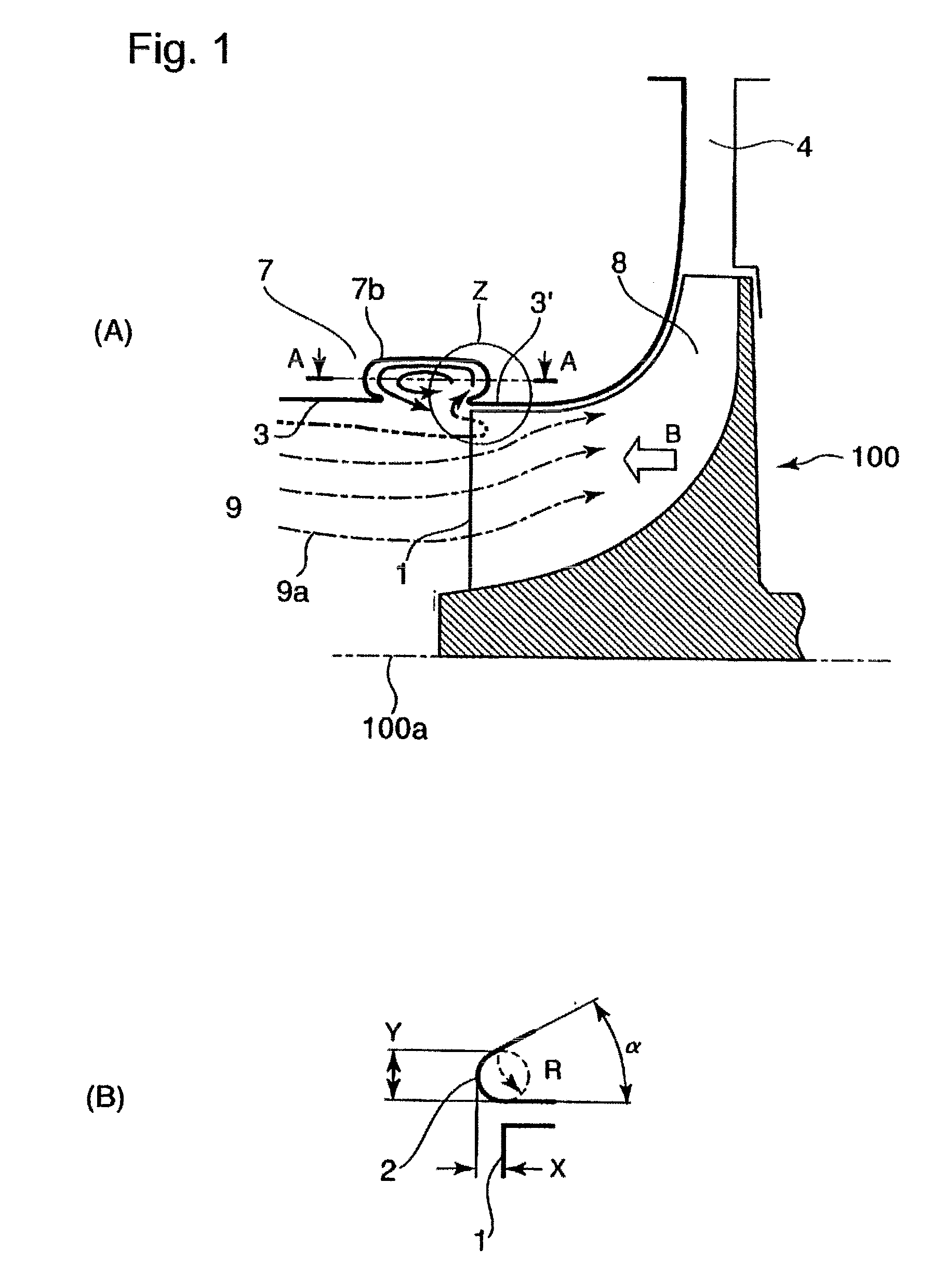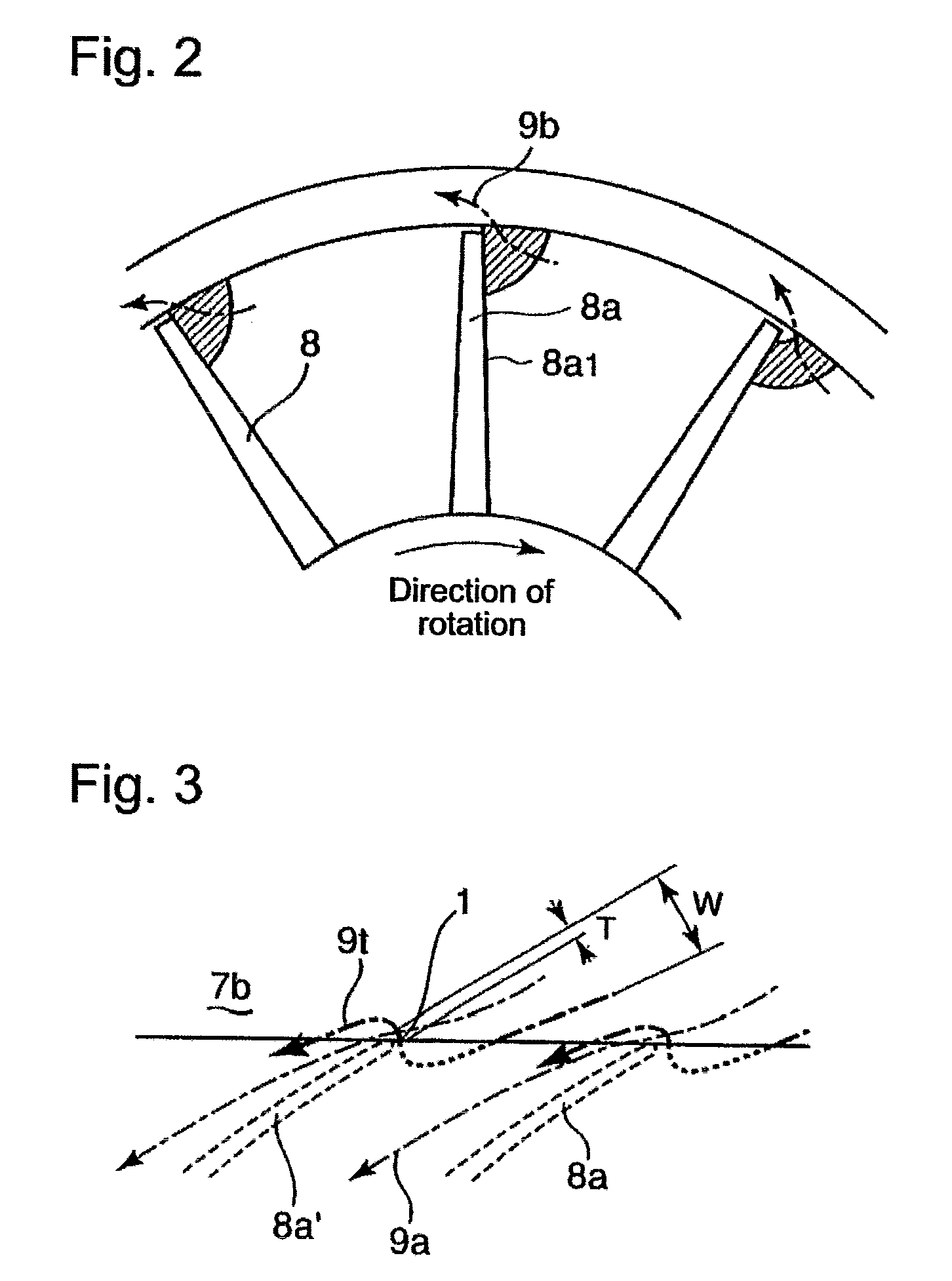Radial compressor
a compressor and radial technology, applied in the direction of machines/engines, stators, liquid fuel engines, etc., can solve the problems of narrow flow rate range between the surge flow rate and the choke flow rate, and the inability to perform stable operation at a surge flow rate or less, so as to reduce the pressure in the recirculation passage, reduce the inlet pressure of the recirculation passage, and run easily
- Summary
- Abstract
- Description
- Claims
- Application Information
AI Technical Summary
Benefits of technology
Problems solved by technology
Method used
Image
Examples
first embodiment
[0053]FIG. 1(A) is a sectional view of an essential section of a radial compressor of an exhaust turbo-charger according to a first embodiment of the present invention, and FIG. 1(B) is an enlarged view of portion Z in FIG. 1(A). FIG. 2 is a fragmentary view taken at line B-B in FIG. 1(A), and FIG. 3 is a fragmentary view taken at line A-A in FIG. 1(A).
[0054]In FIGS. 1 to 3, reference numeral 7 denotes a compressor housing in which an impeller 8 is accommodated, reference numeral 9 denotes an air inlet passage of the compressor housing 7, and reference numeral 4 denotes a diffuser. These components constitute a radial compressor 100. Further, reference numeral 100a denotes a rotational axial center of an exhaust turbo-charger.
[0055]An annular concave groove 7b having an elliptical section is formed in a housing peripheral wall 3 of the air inlet passage 9 of the compressor housing 7, and an opening rear end portion 2 of the annular concave groove 7b which meets the housing periphera...
second embodiment
[0072]Further, FIG. 4 is a sectional view of an essential section of a radial compressor of an exhaust turbo-charger according to a second embodiment. In the second embodiment, a housing peripheral wall 3 in communication with the aforesaid annular concave groove 7b is formed into a curved surface having a radius R. The rest of the construction is the same as the construction of the aforesaid first embodiment, and the same components as those in the first embodiment are assigned the same reference numerals.
third embodiment
[0073]FIG. 5 is a sectional view of an essential section of a radial compressor of an exhaust turbo-charger according to a third embodiment.
[0074]The third embodiment of the present invention has an opening 7z at a middle between a blade front end surface 1 of an impeller 8 and an impeller outlet, and an opening 7y at an upstream side from the blade front end surface 1 of the impeller 8, and includes a recirculation passage 7s which brings the two openings 7z and 7y in communication. Further, an annular component 70 is installed inside the recirculation passage 7s so as to be able to form the recirculation passage 7s. Inside the annular component 70, an annular concave groove 7b and an upstream end wall 7x (the virtual line indicated by the dashed line in the figure) thereof are formed such that they share an upstream-side wall surface of the opening 7y on the upstream side of the impeller of the recirculation passage 7s.
[0075]More specifically, a housing peripheral wall 3 of an ai...
PUM
 Login to View More
Login to View More Abstract
Description
Claims
Application Information
 Login to View More
Login to View More - R&D
- Intellectual Property
- Life Sciences
- Materials
- Tech Scout
- Unparalleled Data Quality
- Higher Quality Content
- 60% Fewer Hallucinations
Browse by: Latest US Patents, China's latest patents, Technical Efficacy Thesaurus, Application Domain, Technology Topic, Popular Technical Reports.
© 2025 PatSnap. All rights reserved.Legal|Privacy policy|Modern Slavery Act Transparency Statement|Sitemap|About US| Contact US: help@patsnap.com



